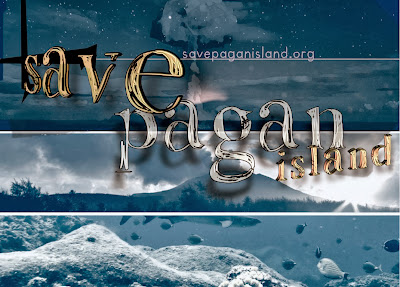MITT Public Hearing
Tomorrow, the Department of Defense will be holding a public hearing in the LG Multipurpose Room in the SBPA Building at UOG, from 5 - 8 pm. The hearing is about the MITT or Marianas Islands Training and Testing Area, which is the largest training area the United States military has in the world. If you would like to make your voice heard please come out and testify or at least collect some information.
***************************
Mariana
Islands Training and Testing Area
From Draft EIS/OEIS Executive Summary
“The purpose of the Proposed
Action is to conduct training and testing activities to ensure that the Navy
meets its mission, which is to maintain, train, and equip combat-ready naval
forces capable of winning wars, deterring aggression, and maintaining freedom
of the seas. This mission is achieved in part by conducting training and
testing within the Study Area.”
The No Action Alternative is required by regulations of the CEQ as a baseline
against which the impacts of the Proposed Action are compared. The No Action
Alternative continues baseline training and testing activities and force
structure requirements as defined by existing Navy environmental planning documents. The No Action Alternative represents the
activities and events analyzed in previously completed documents. However, it
would fail to meet the current purpose and need for the Navy’s Proposed Action
because it would not allow the Navy to conduct the training and testing
activities necessary to achieve and maintain Fleet readiness. For example, the
baseline activities do not account for changes in force structure requirements,
the introduction of weapons and platforms, and the training and testing required
for proficiency with these systems.
Alternative
1 consists of the No Action Alternative, plus the
expansion of Study Area boundaries and adjustments to location, type, and tempo
of training activities, which includes the addition of platforms and systems.
• Adjustment of
the Study Area. This EIS/OEIS contains an analysis of areas where training and testing
would continue as in the past, but were not considered in previous
environmental analyses. Alternative 1 would expand the area that is to be
analyzed as depicted in Figure ES-1 and described below.
o
Expansion
of the Northern and Western Boundary of the Study Area. The area to the
north of the MIRC that is within the Exclusive Economic Zone of the Northern
Mariana Islands and the areas to the west of the MIRC.
o
Transit
Corridor: An area not previously analyzed in the open ocean between the MIRC and
the HRC. During transit within this area, U.S. Navy ships conduct limited
training and testing. These activities would be included in this EIS/OEIS.
• Adjustments to
Locations and Tempo of Training and Testing Activities: This alternative
also includes changes to training and testing requirements necessary to
accommodate (a) the relocation of ships, aircraft, and personnel; (b) planned
aircraft, vessels, and weapons systems; and (c) ongoing activities not
addressed in previous documentation.
o
Force
Structure Changes: Force structure changes involve the relocation of ships, aircraft, and
personnel. As forces are moved within the existing Navy structure, training
needs will necessarily change as the location of forces change.
o
Planned
Aircraft, Vessels, and Weapons Systems: This EIS/OEIS will examine the training and
testing requirements of planned vessels, aircraft, and weapons systems.
o
Ongoing
Activities: Current training and testing activities not addressed in previous
documentation will be analyzed in this EIS/OEIS.
o
Danger
Zones: This
EIS/OEIS will examine establishment of Title 33 C.F.R. Part 334 Danger Zones
for existing shore-based small arms and explosive ordnance disposal ranges and
a nearshore small arms training area.
o
Net
Explosive Weight Increases: An increase in net explosive weight for
underwater detonations from 10 pounds (lb.) to 20 lb. at Agat Bay Mine
Neutralization Site and Outer Apra Harbor Underwater Detonation Site.
Alternative
1 reflects adjustments to the baseline activities which are necessary to
support all current and proposed training and testing activities through 2020.
Alternative 2 consists of all activities that
would occur under Alternative 1 and adjustments to the type and tempo of
training and testing. This alternative is contingent upon potential budget
increases, strategic necessity, and future training and testing requirements.
Alternative 2 would include the following:
•
The
addition of three major at-sea training activities (Fleet Strike Group
Exercise, Integrated Anti- Submarine Warfare Exercise, and Ship Squadron
Anti-Submarine Warfare Exercise) conducted in the Study Area.
• Adjustments to
Alternative 1 for Naval Air Systems Command and Naval Sea Systems Command
testing activities are proposed.




Comments